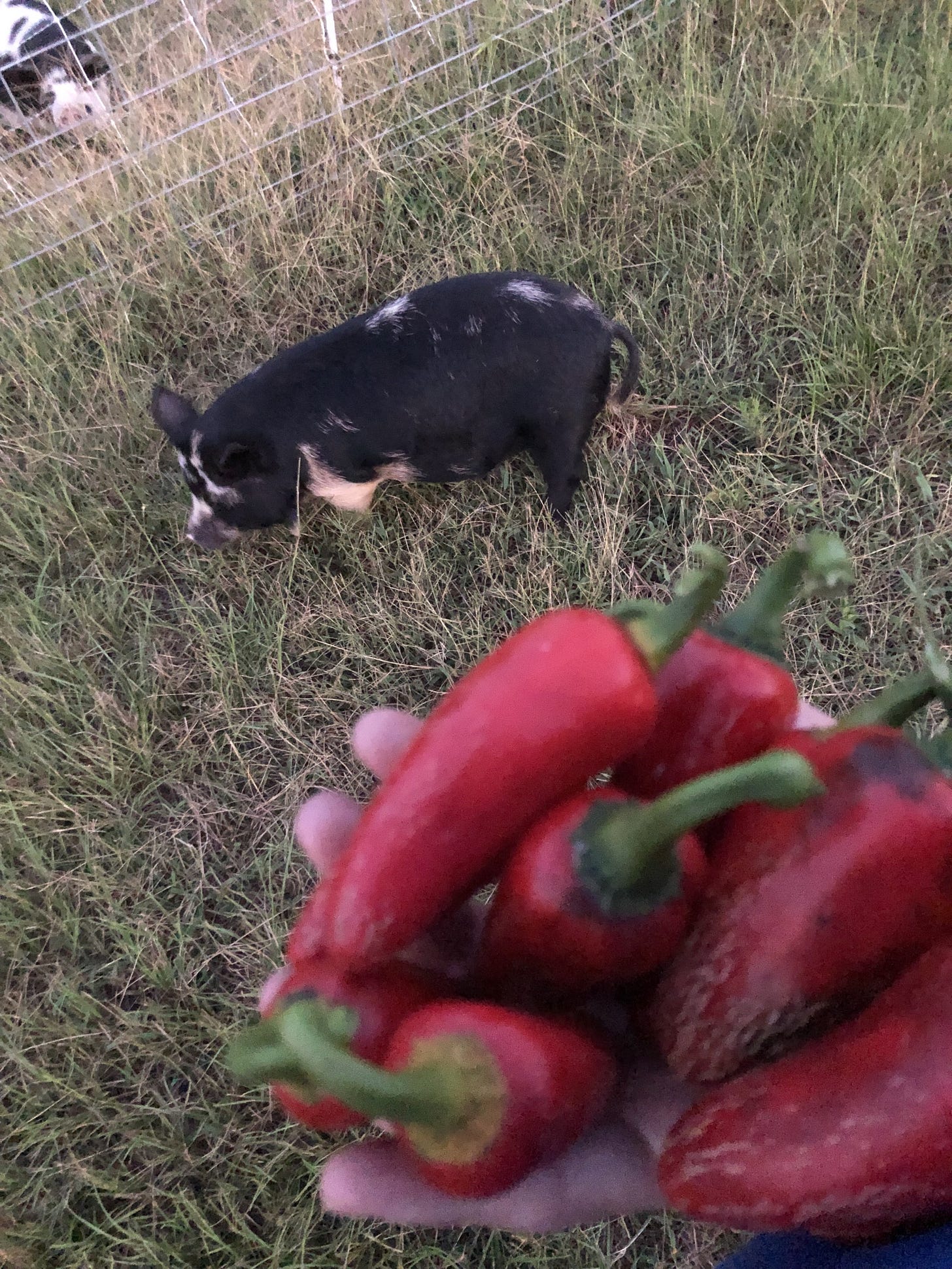Butchering Week, a New Baby Lamb, and Other Homesteading News
A while back I put out a poll to all subscribers asking if you’d be interested in more than just tech and retro stuff here — namely, homesteading articles and the like — and the overwhelming majority said yes. Well, it’s been a while and you’ve heard me talk a little about this on the podcast, but here is the first official homestead update for The Retro Millennial!
NOTE: I know some people are uneasy when it comes to animals getting harmed, so I have omitted any images of the actual dispatching and what follows. Also, please know that we love our animals and have worked really hard to take great care of them, to make sure they were happy and healthy, and to give them a good life.
Surprise!
To start off with, let’s talk about some of what we’ve been up to with our homestead. One morning back in January I was at work when my wife called me. She had been looking out the window at the sheep when something caught her eye. It was a little black thing out in the field near one of the ewes (female sheep). Now we’ve had a problem with critters killing and carrying off our chickens — likely an opossum from what we’ve seen in the remains — so she went out to check on it. It turns out it was a new baby lamb! That sheep, Jane, is small and was never noticeably pregnant so we had no idea she was. I came home for a bit and we got everyone situated and moved her and her lamb, whom we named Surprise, into the pen with the goats to keep them safe from the bigger sheep.

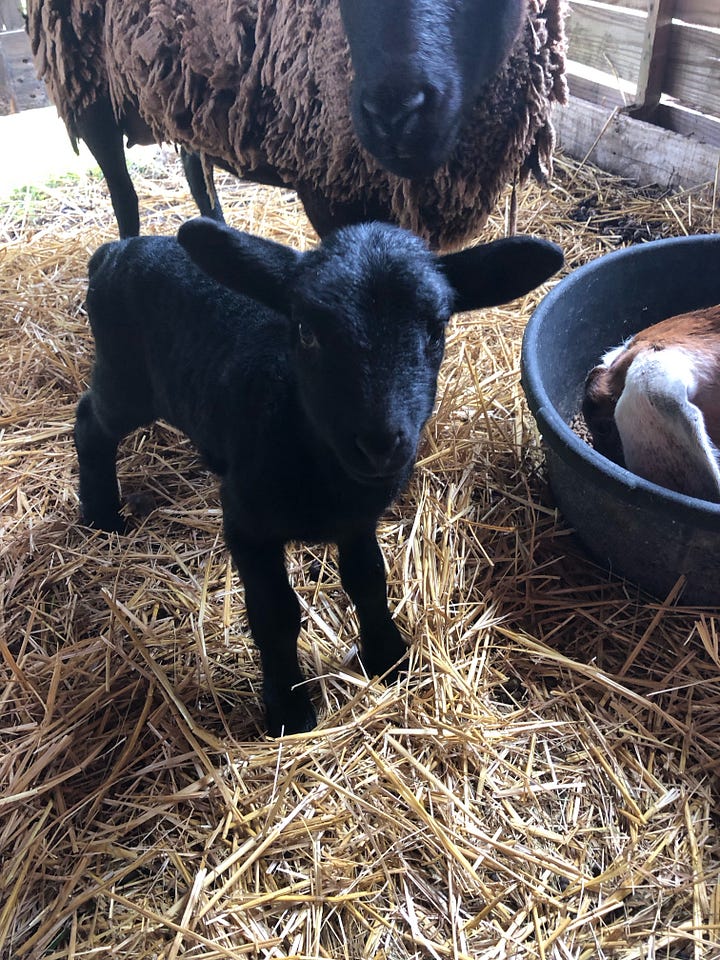
Sold the Ram
A few weeks earlier we sold our ram, Mr. Darcy (are you seeing a trend with some of the names?). He was great breeding stock and went pretty quick when we posted about him. While it was nice to have a ram to breed the ewes to, I was really happy to get rid of him. Rams can be very dangerous animals and there were a few times where I had to get physical with him — most recently when we were trying to get Jane and her baby out of the sheep pen. The family that picked him up had a farm a few towns over and knew how to deal with rams and bulls so they had no problem giving him a new home and the money we got for him helped pay for the butchering fees.
Separating the Sheep from the Goats
Fast forward to a week or two after butchering and we finally decided Jane was healthy enough and Surprise was strong enough to go back in with the other sheep. Pictured below is Jane and Surprise, Jane’s sister Honey (the bigger one), Ferdinand (the white one) and Ninja (the little black and brown one in the background). Ninja was actually a twin from another ewe we had who unfortunately died shortly after giving birth to Ninja and his sister. We sold his sister to another family in the area who were raising sheep and goats.
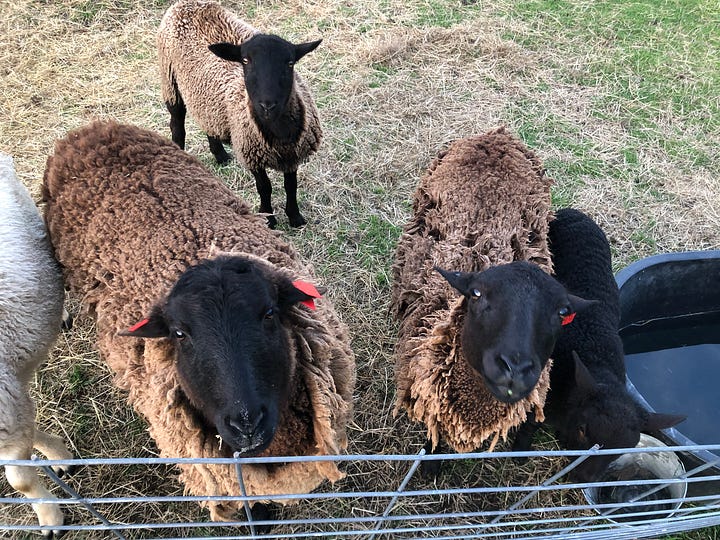
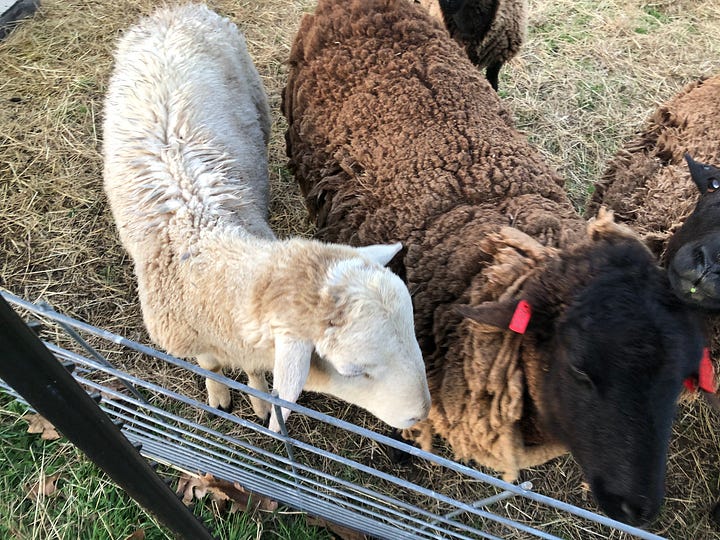

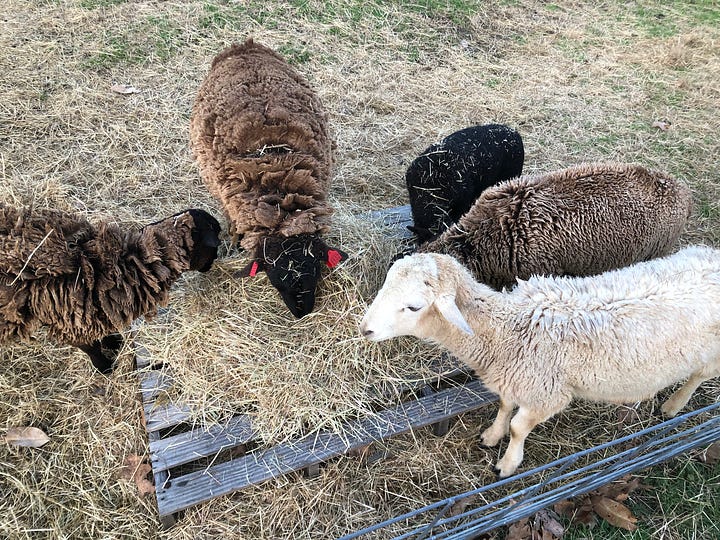
Pregnant Goat
Now I’ve mentioned the goats a couple of times, so let me introduce them. Our three does are Fern (no spots), Willow (big spots), and Lucy (little spots). They are Nubians and are probably the sweetest animals on our little farm aside from the dog.
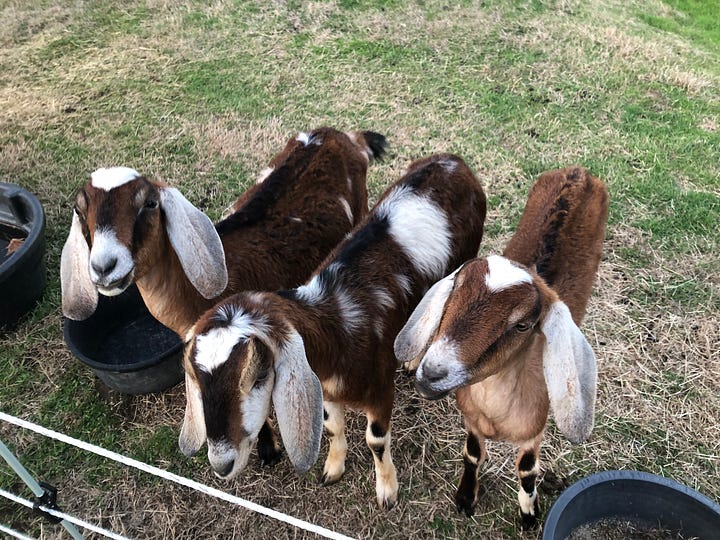
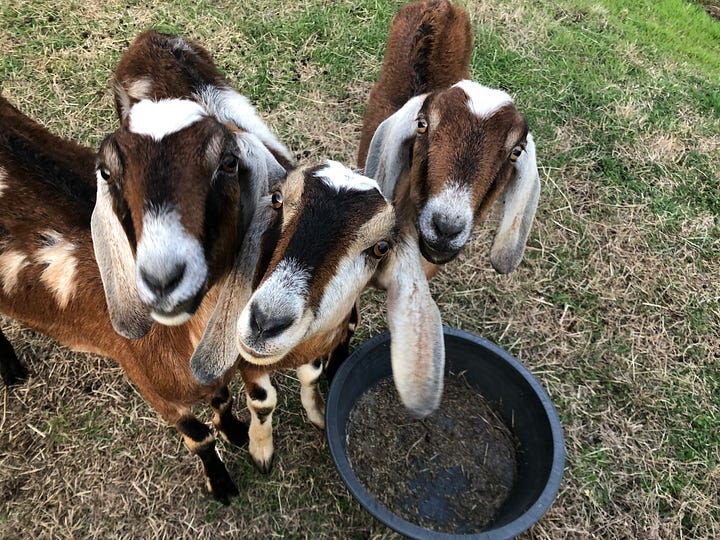
We’d been wanting them to breed with our Nubian buckling — not pictured; he, unfortunately, died during that big polar vortex thing that happened back in December when it dropped to 17 degrees — but didn’t think it had worked. Well to our surprise, Lucy appears to be! She is getting rounder than the others and her utters are developing. Pretty soon we should have a new kid (a young goat) and eventually we will start milking her as well.
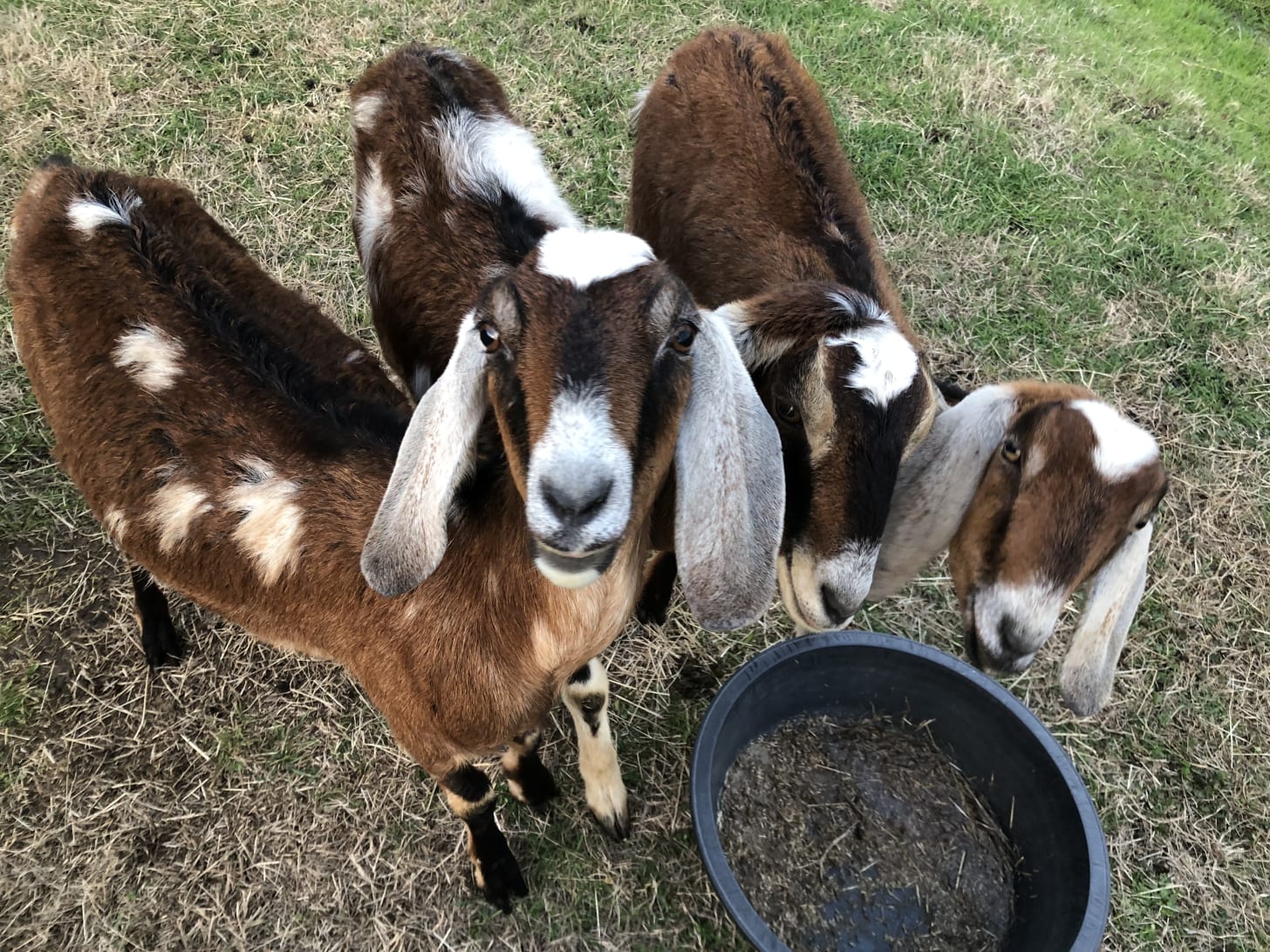
Pigs
Oh, the pigs. I loved my pigs, but they drove me crazy. They were kunekune pigs named Haka (the one behind the fencing in the photo) and Pua (the darker one outside of the fencing). Haka was great. He was docile and friendly; he just wanted to eat, sleep, and poop. Pua, on the other hand, was very different. He was like a little tank plowing through fences and uprooting plants. Pictured below was all that was left of our garden after he decided to go exploring!
Butchering
Back in late January we planned a butchering day. Previously, we’d taken our other pigs to a local butcher but that was really expensive and a hassle. Add to that our desire to be more self sufficient and to learn how to do more things on our own, and we decided to try it at home this year. We found a guy a few towns over who just started his mobile butchering business so we had him come out, and that was one of the best decisions we could have made! He was a good guy who was really professional, he was quick and efficient, and he used to be a teacher so he offered to teach my wife and I and our kids about all the parts of the process. It was a really educational day and it only cost us around $250 for him to take care of both pigs and a sheep.
Now part of his service includes complete processing and packaging as well, but that adds a good bit to the cost so we planned ahead and picked up a few rolls of vacuum seal bags and borrowed a sealer from a friend. Instead, we had him just cut them into what he called “primal cuts” which is basically taking the whole animal and cutting it into six sections. From there, my boss’s father — a retired butcher — came over and helped us learn what we were doing.

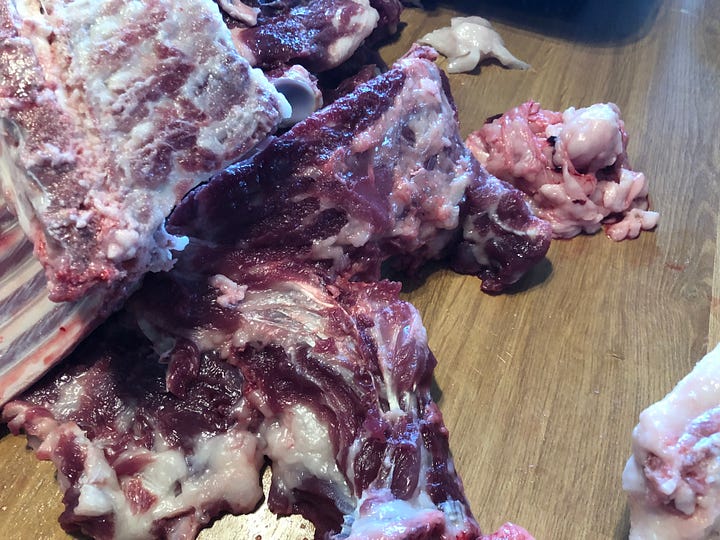
After both of them left, my wife and I worked together on processing and packaging. It was A LOT more work than we anticipated and butchering day turned into butchering week. We basically took the evening each day after the kids were in bed to make the cuts, vacuum seal and label them, then dispose of the leftover bits. We kept many different cuts, many of the bones for broth and bonemeal, organs for dog food and other things, and a ton of fat for cooking lard and other things we can use it for.

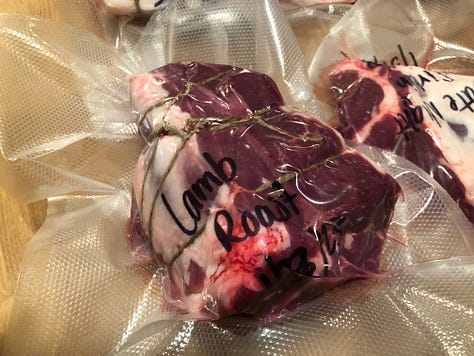

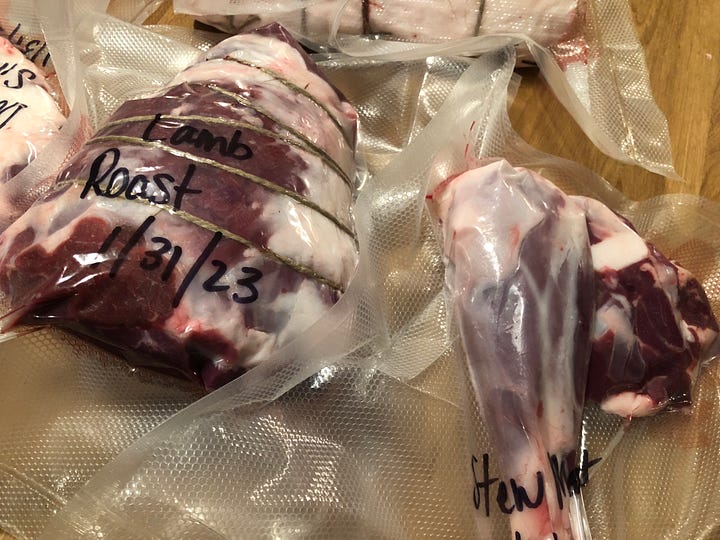

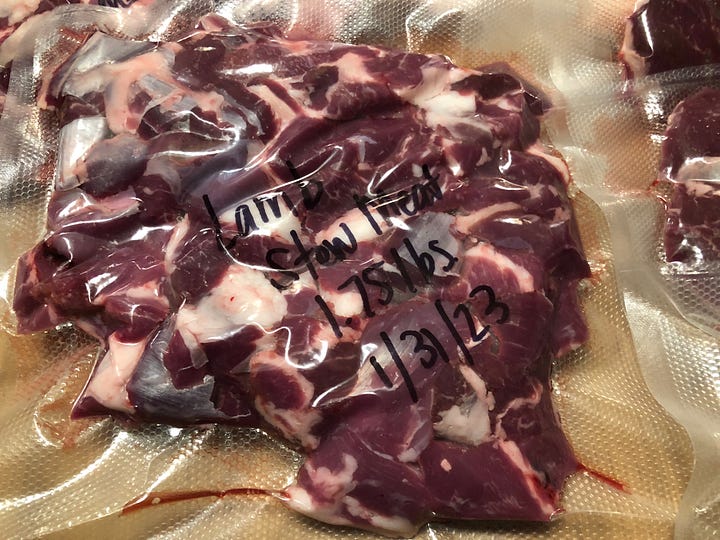

While there are a lot of different cuts of meat you can get from a pig or a sheep, we actually eat a lot more ground meat so we opted to grind a lot of the pork and lamb for sausage and a ground beef alternative. For this, we got to break out our Meat! 0.5 HP meat grinder. It worked like a dream and by the end of it we had about 35 pounds (15.88 kilograms) of ground pork, ground lamb, breakfast sausage, and spicy Italian sausage.
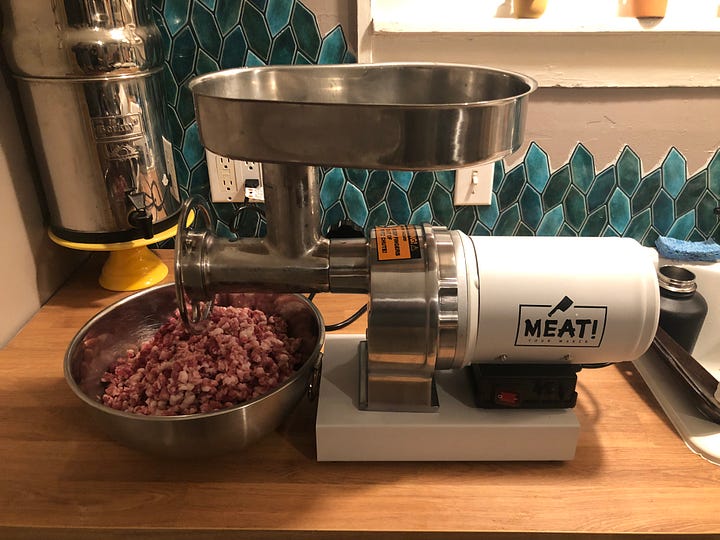
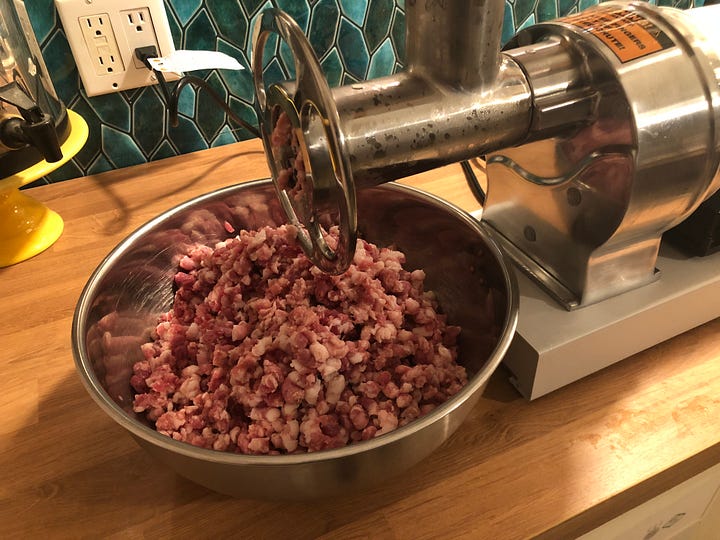
Overall it was a great experience. We learned a lot and there is such a sense of satisfaction knowing that you raised these animals, cared for them, made sure they had a good life, and then were able to provide food for your family — knowing all the while what they ate and what medications they were given. The meat, especially the pork, was this really nice deep red color instead of the pale pink stuff you often see in the grocery stores. Still, it was a long, LONG, week and I’m glad it’s over.





